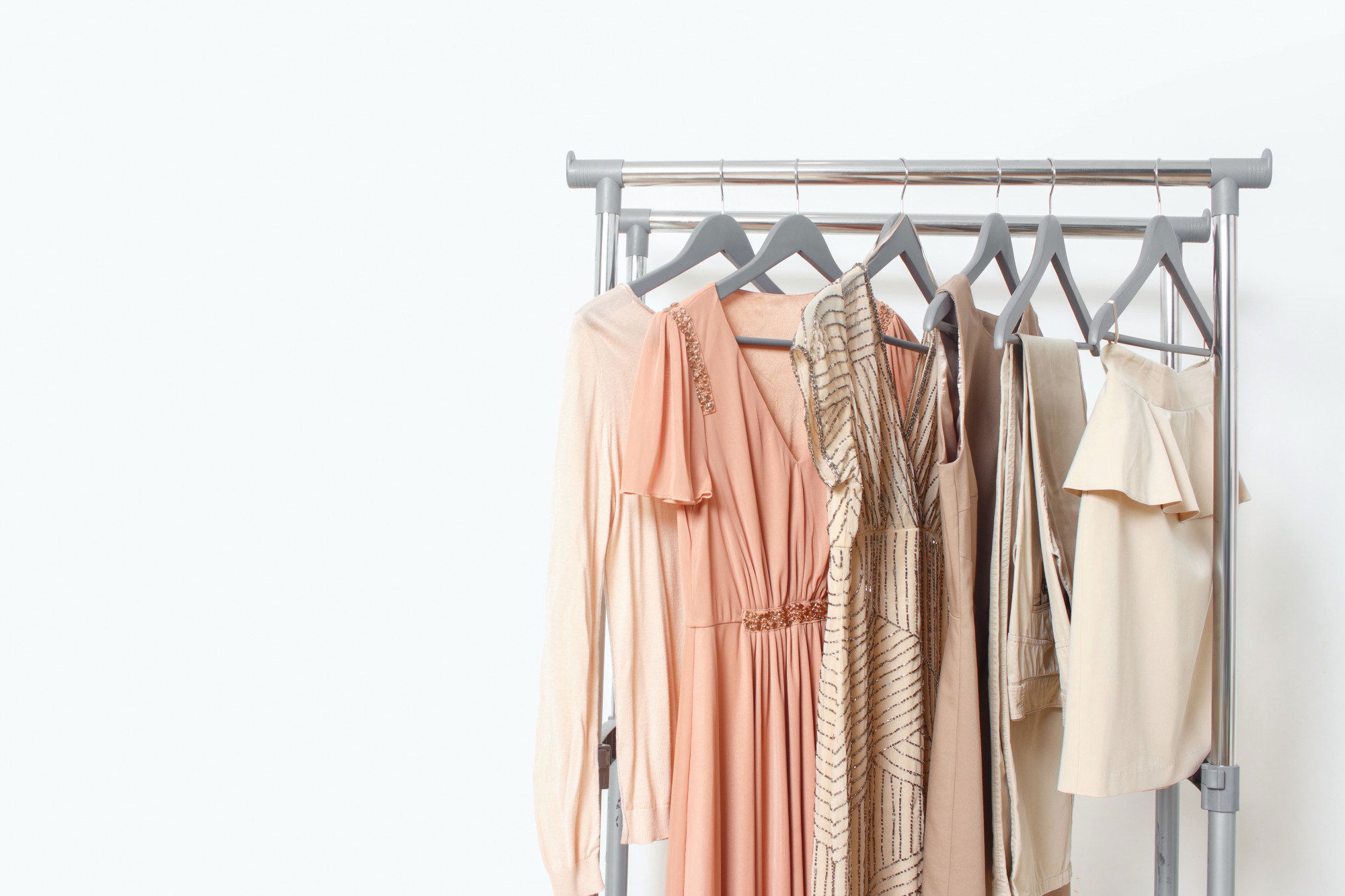The Rise Of Sustainable Dresses: The Fashion Revolution
Sustainable dresses are a growing trend these days. They’re in high demand, endorsed by celebrities, and a way forward for fashion brands. Learn all the whats, whys, and wheres here.
Up until the early 1800s, garment manufacturing was a small-scale, home-based, and eco-friendly industry. But the Industrial Revolution changed the face of the fashion industry forever, introducing giant factories, fast machinery, and cheaper materials.
The ecological damage produced by garment production has only been on the rise since then. The late 1990s introduced another catastrophic trend for our environment: fast fashion. Materials became even cheaper, clothing quality deteriorated, and working conditions worsened. It wasn’t until heartbreaking tragedies like the Nike sweatshop scandals and Bangladesh’s Rana Plaza collapse moved the entire world that sustainable dresses made it to the top trends.

Today, eco-friendly fashion is one of the most celebrated fashion movements among millennials and Gen-Z. So what are sustainable dresses, what makes them so popular, and where can you get some? If you are new to sustainable fashion, this blog post has got you covered!
So keep reading.
What Are Sustainable Dresses?
In a world where fashion choices have the power to shape a better future, sustainable dresses have emerged as the champions of ethical and eco-friendly style. But what sets them apart from conventional dresses? Let’s uncover.
Imagine a dress made from organic cotton, grown without harmful pesticides and chemicals, ensuring a healthier planet and safer working conditions for farmers. Picture a dress crafted from recycled polyester, giving new life to discarded materials and reducing waste. These are just a few examples of the sustainable materials fashion-forward brands embrace.
Sustainable dresses go beyond the fabric. They embody the values of transparency and fairness. From sourcing materials to manufacturing, these dresses prioritize ethical practices and promote the well-being of both people and the planet.
But sustainable dresses are not just about sustainability. They also boast breathtaking designs and impeccable craftsmanship. From timeless classics to contemporary trends, these dresses are a blend of style, conscience, and versatility. You can dress up or down, knowing that your fashion choices are making a difference.
In summary, sustainable dresses are ones that:
- Look good,
- Feel good,
- Do good.

Key Factors Contributing To The Rise Of Sustainable Dresses
As the world saw mountains of waste gathering in our landfills and oceans due to fast fashion, our minds naturally got into problem-solving mode.
Did you know? 235 million clothing items were sent to landfills last year! And the clothing factories continue to make more and more each year.
Statistics like these call for a solution. And sustainable dresses gave some hope. Let’s look at some of the critical factors that contribute to the popularity of sustainable fashion:
1. The Shift Towards Sustainability Mindset
With the growing awareness of the perils of fast fashion, consumers are becoming increasingly wary of irresponsible fashion brands.
Consumers are becoming detectives, uncovering the hidden stories behind their garments. They ask themselves: Who made my clothes? What impact does their production have on the environment?
This newfound curiosity has led to a demand for ethical and eco-friendly fashion options. As a result, sustainable dresses have stepped into the spotlight, offering a guilt-free alternative that satisfies both style cravings and eco-consciousness.
Another major factor contributing to this shift of mindset owes thanks to environmental movements and campaigns. Activists, designers, and organizations from around the world have come together to raise awareness, spark conversations, and ignite change.
Click here to learn more about why sustainable fashion is worth investing in.
2. Development Of Sustainable Materials And Production Techniques
Manufacturing sustainable dresses would not have been possible if several eco-friendly materials had not been developed. For example, cotton is highly unsustainable, contrary to popular belief. It requires tons of water, pesticides, and chemicals for its agriculture.
Technicians and scientists worked hard to introduce organic cotton, a natural fiber grown without harmful pesticides, promoting healthier soil and water systems. Similarly, methods to recycle plastic waste into polyester material gave plastic bottles a second life.
Sustainable dresses don’t stop at the fabric choice; the dyeing and printing processes also matter. Eco-friendly brands are championing innovative techniques that minimize water consumption, use non-toxic dyes, and reduce the release of harmful chemicals into the environment. By embracing these methods, they ensure that the beauty of their dresses doesn’t come at the planet’s expense.
RELATED: Why Closed-Loop Production Matters?
3. Innovative Designs And Versatility
Modern brands incorporate innovative and trendy designs into their collections, making sustainable dresses even more appealing. These dresses prove that sustainability and style can go hand in hand.
Imagine flowing maxi dresses like this Linen Open Back Dress Pink, exuding elegance and grace. Visualize minimalist designs that celebrate simplicity and sophistication, showcasing the power of conscious fashion choices.

Plus, sustainable dresses are all about versatility and longevity, offering pieces that seamlessly transition from day to night, from casual outings to formal occasions. These dresses can be your wardrobe essentials, making each purchase count. They can be cherished and worn season after season, reducing the need for constant replacements.
4. Power Of Collaboration And Transparency
Collaboration is the heartbeat of sustainable dress production. Designers, brands, and suppliers joining forces have the power to impact the fashion industry positively. By working together, they can share knowledge, resources, and expertise to develop innovative solutions prioritizing sustainability.
Another crucial factor making sustainable dress manufacture possible is the transparency and traceability of the supply chain. It involves shining a light on the entire supply chain, from sourcing raw materials to manufacturing processes.
Traceability is a crucial aspect of transparency, enabling brands to track the journey of their dresses from inception to completion. It allows them to identify potential issues, monitor their products’ environmental and social impact, and make necessary improvements.
One such brand offering complete traceability and transparency is 1People.
Subscribe to our newsletter and save!
Join the SIS community and get 10% off your next purchase.
5. Influencers and Celebrities Supporting Sustainable Fashion
Influencers and celebrities hold tremendous sway in shaping trends and consumer behavior. When they choose to wear and promote sustainable dresses, their impact reverberates through the industry, inspiring a wave of eco-consciousness among their followers.
Celebrities like Emma Watson and Leonardo DiCaprio have been outspoken advocates for sustainable fashion and have graced red carpets in elegant sustainable dresses. Fashion-forward musician Pharrell Williams has collaborated with sustainable brands, using his influence to spotlight innovative and eco-friendly designs.
These influential figures are shaping the fashion landscape, influencing public perception, normalizing sustainable dress choices, and inspiring others to follow suit.

Emma Watson’s most iconic Calvin Klein dress at the Met Gala-2016 was made out of plastic bottles.
How To Choose The Best Brands For Sustainable Dresses?
Now that you are all in about everything good about sustainable fashion let’s arm you with some solid tips for choosing the best brands to shop from.
Here are some key considerations to help you navigate the landscape and choose the best brands for sustainable dresses:
1. Prioritize Transparency: Look for transparent brands about their sourcing and production practices. Seek information about the materials they use, their manufacturing processes, and their commitment to fair trade and ethical labor practices. A brand that values transparency demonstrates its dedication to responsible and sustainable fashion.
2. Verify Certifications and Standards: Keep an eye out for certifications and standards that validate a brand’s sustainability claims. Look for labels like Global Organic Textile Standard (GOTS), Fair Trade Certified, and B Corp, indicating a brand’s commitment to social and environmental responsibility. These certifications ensure that the brand adheres to specific sustainability criteria.
3. Assess Material Choices: Consider the materials used in the dresses. Look for organic and natural fibers like organic cotton, linen, hemp, and TENCEL™, as they have a lower environmental impact than conventional fabrics. Additionally, explore brands prioritizing recycled and upcycled materials, reducing waste, and promoting circular fashion.
4. Evaluate Supply Chain Practices: Examine a brand’s supply chain to ensure they work with suppliers that share their commitment to sustainability. Seek brands supporting local artisans, promoting fair wages, and fostering long-term relationships with suppliers. Ethical supply chain practices are integral to creating a more sustainable and equitable fashion industry.
5. Embrace Slow Fashion: Choose brands that embrace slow fashion principles, valuing quality over quantity. Look for dresses that are well-made and designed to last. Slow fashion encourages thoughtful consumption, reducing the need for frequent replacements and minimizing waste.
6. Research Brand Initiatives and Impact: Investigate the initiatives and projects brands undertake to drive sustainability. Look for brands that invest in renewable energy, offset carbon emissions, and actively contribute to social and environmental causes. Supporting brands beyond just making sustainable dresses helps amplify the impact of your purchase.
7. Read Reviews and Seek Recommendations: Engage with the sustainable fashion community to gather insights and recommendations. Read reviews, seek feedback from conscious consumers, and follow influencers or bloggers passionate about sustainable fashion. Their experiences and suggestions can guide you toward brands genuinely committed to sustainability.

Wondering what’s the best marketplace to look for such brands? Start your search with the Swiss Impact Store. Dealing with the best local brands and shipping all across Europe and even worldwide, the Swiss Impact Store has become a go-to for every conscious shopper.
Click here to read more about how Swiss Impact Store handpicks sustainable brands so you shop with confidence.
Last Words
Sustainable dresses are topping the fashion trends chart everywhere in the world. And with all the eco-consciousness we are witnessing in our consumers, we are confident that this trend is here to stay!
Ready to explore the best sustainable dress brands? Visit the Swiss Impact Store and discover a curated selection of ethical and eco-friendly fashion options. Join our tribe and embrace the journey towards a more sustainable wardrobe.
Together, we can make a difference.

Making Sustainable Lifestyle Transformation Easy
SiS is more than a simple e-commerce platform. Our mission is to encourage, help, and inspire people to look for sustainable sourcing, reduce production waste, carbon footprint, and make conscious choices.
Whether you’re on the hunt for sustainable clothing, clean beauty, or ethical homeware, our team has done the hard work for you, carefully screening brands before ever being displayed at SIS.
So all that’s left for you is to shop with peace of mind.